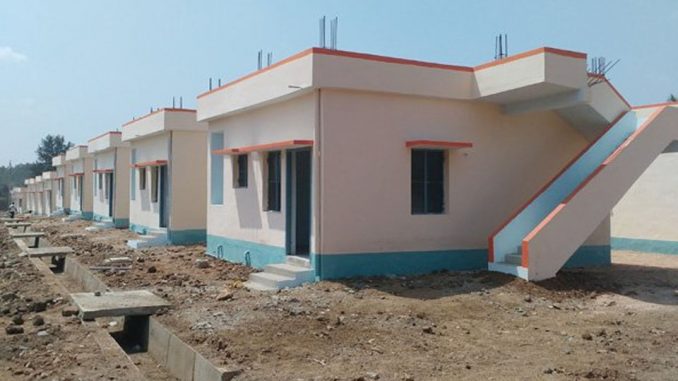
By Tadit Kundu
While housing conditions in general have improved in recent years, disparities still persist across communities, and between rural and urban areas
Roughly one in six families were able to move from a kuccha to a pucca house in the five years between 2011 and 2016, a Mint analysis of data from the National Family Health Survey (NFHS) conducted in 2015-16 and the last census conducted in 2011 shows. Although designed as a health survey, the NFHS is a rich source of data on living conditions and has a wide coverage, with more than half a million respondents.
The proportion of households staying at a pucca house—one which is strong or permanent in nature—rose from 55% in 2011 to 71% in 2015-16, the analysis shows. The rise was sharper in rural India compared to urban India.
Here, pucca house refers to any dwelling where walls and roof are made of improved materials such as galvanized iron (GI)/metal/asbestos sheets or stones with cement or bricks or concrete. This is the definition employed by Census to categorize a house as pucca and is a bit lenient as it excludes any floor specification.
The share of pucca houses is the highest in the northernmost states. It is the worst in eastern states—West Bengal, Assam and other northeastern states—with only 55% of houses in these states being pucca in 2015-16, although some of these states have been catching up.
While housing conditions in general have improved in recent years, wide disparities still persist across communities, and between rural and urban areas.
If one adopts a stricter definition for pucca houses, as employed by NFHS, one would find that many of the houses classified as pucca by Census would actually resemble a semi-pucca house.
Thus, only 42% of all rural houses were fully pucca in 2015-16 as against 86% in urban areas. Fully pucca here refers to the NFHS definition of a puccahouse, which requires all three components—walls, roof and floor—to be made of strong or permanent material.
The past few years have witnessed increased spending on the government-funded rural housing program, the Pradhan Mantri Awaas Yojana-Grameen (PMAY-G) (which replaced the erstwhile Indira Awaas Yojana).
The centre’s allocation to PMAY-G rose from ₹13,200 crore in 2013-14 to ₹23,000 crore in 2017-18 (revised estimates).
The increased allocation has evidently bore fruits, if one goes by the portal of the ministry of rural development. Three million rural houses were constructed in 2016-17, a 61% jump compared to the year-ago period.
However, it is worth noting that the number of new rural houses constructed in the 2015-17 period under government-sponsored schemes covered just 5% of estimated households lacking a fully pucca house in 2015-16. The number of households living in a kuchha house or a semi-pucca house in 2015-16 has been estimated using NFHS results and by assuming that population grew at the same rate since 2011 (census) as it did between 2001 and 2011.
Applying the same method to states, we find that some laggard states—Odisha, West Bengal and Chhattisgarh— have had more success than others in reducing the share of the population without fully pucca homes.
Bihar and Uttar Pradesh have also progressed but the speed of subsidized housing construction in these states remains slow when we consider the share of families without fully pucca homes in these states.
Apart from rural housing, the government has also launched the Pradhan Mantri Awaas Yojana (Urban) in 2015 to sponsor urban housing for the poor.
However, progress under the urban scheme has been tardy. A Lok Sabha reply dated 31 July showed that out of the sanctioned 5.4 million units, only 800,000 urban houses had been constructed in the three years since 2015 under Pradhan Mantri Awaas Yojana (urban).
Source: Livemint

Leave a Reply